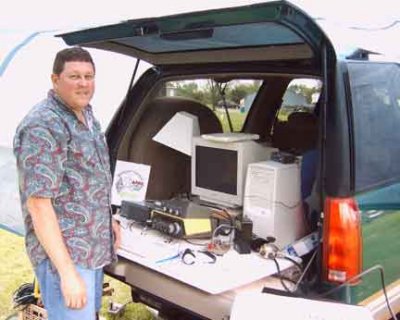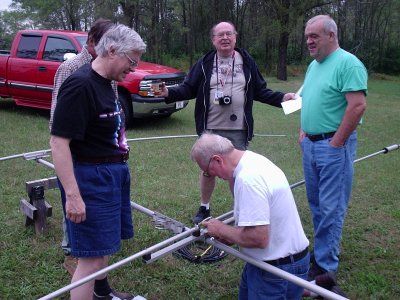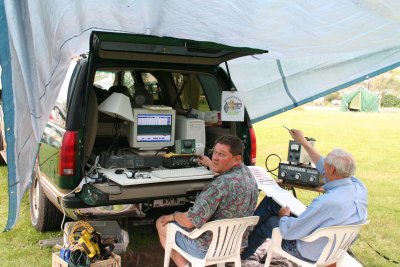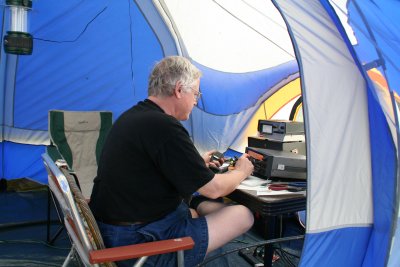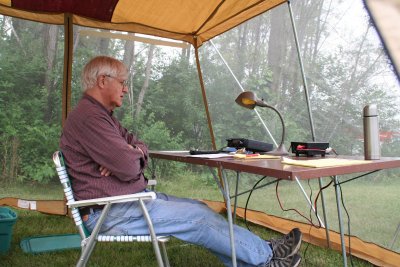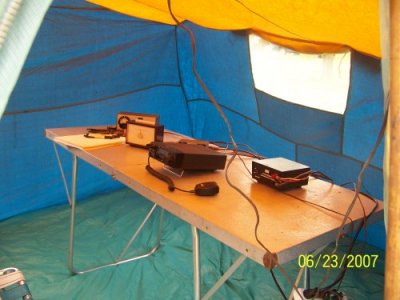Field Day 2007
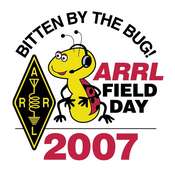
Published in the Janesville GazetteXtra
Amateur radio enthusiasts compete at field day (Monday, June 25, 2007)
By Catherine W. Idzerda, Gazette staff
ROSCOE, ILL .- Relationship specialists are always saying that men need to learn to communicate better.
Those specialists have never met any of the guys from the Beloit Amateur Radio Club.
Club members spent 24 hours outdoors Saturday and Sunday, communicating with people from around the country.
It wasn't group therapy; it was an amateur radio field day.
A field day is fun with a serious purpose.
"It's a demonstration of the ability of amateurs all over the country to set up communications independent of commercial power lines, antennas or existing infrastructure," explained Doug Speer, 4328 Fox Hills Drive, Janesville. His on-air call sign is W9PN.
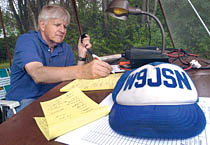 Gary Cook of Beloit writes down a contact during the Beloit Amateur Radio Club's field day in Roscoe, Ill. The field day is a demonstration in the contiguous 48 states to see who can make the most contacts during an emergency situation. Gary Cook of Beloit writes down a contact during the Beloit Amateur Radio Club's field day in Roscoe, Ill. The field day is a demonstration in the contiguous 48 states to see who can make the most contacts during an emergency situation.
Al Hoch/Gazette Staff
|
If there's a crisis, such as a tornado, amateur radio operators keep the lines of communication open.
During Hurricane Katrina, amateur or "Ham" radio was often the only way people could communicate. Hundreds of operators traveled south to save lives and property.
At the local field day in Roscoe, Ill., 15 Hams from the stateline area worked at seven operating stations in six tents under eight portable antennas.
The goal was to try to contact as many people as they could in 24 hours.
Throughout the night, they transmitted signals and received them in return. Or they flipped around the dial of a gadget called a "transceiver," looking for signals to contact.
|

